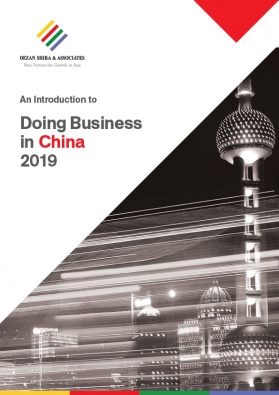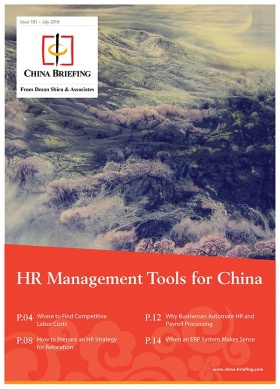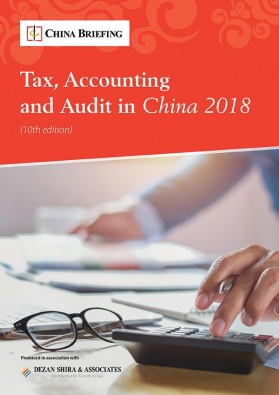China’s Incentives to Reduce Capital Pressure on Firms, Boost Employment

On December 5, 2018, China’s State Council announced incentives to encourage firms to avoid layoffs as the government looks to head off employment “uncertainty”.
The measures mainly target small and medium-sized enterprises and include unemployment insurance refunds to firms with no or few layoffs, easier access to loans for small and micro firms, and subsidies for staff training and the unemployed.
Drafted on November 16, the notice was passed down to local governments to initiate their own specific measures for implementation within 30 days. Local governments have been instructed to raise their financial support for private sector enterprises, which are the main driver of urban employment in China.
China’s employment incentives
As part of the incentives, China is offering 50 percent unemployment insurance refunds for companies that do not lay off staff or keep redundancies to a minimum. For those facing temporary operational difficulties but are refraining from laying off their employees, the refunds could be higher.
Currently, the total unemployment insurance rate in mainland China – including employer and employee contributions – is generally around one percent of an employee’s total pre-tax salary. Employers usually contribute about 0.5 to 0.7 percent of an employee’s salary, while employees contribute around 0.3 to 0.5 percent, depending on the region.
With the incentive, qualified enterprises can receive a 50 percent refund on the total one percent rate of unemployment insurance contributions made both by the employer and the employee.
For example, a Shanghai-based employer, who contributes 0.5 percent for unemployment insurance, can get around RMB 4,279 (US$621) refunded from last year’s payment per employee based on Shanghai’s 2017 average annual salary, which was RMB 85,584 (US$12,426).
Besides unemployment insurance refunds, the incentives also allow eligible individual entrepreneurs and small enterprises to apply for a government-guaranteed loan of up to RMB 150,000 (US$21,800) and RMB 3 million (US$435,600), respectively.
Moreover, over the next three years, intern subsidies will be given to one million young people aged 16 to 24 years, rather than only to college graduates, as was previously the case. Training subsidies will also be granted to both in-service staff and unemployed persons.
Why has China unveiled the incentives now?
The ongoing US-China trade war has brought uncertainty to China’s economy and jobs market. In order to maintain social and economic stability, the Chinese government has prioritized measures that will safeguard employment while negotiations with the US continue.
According to a private survey jointly conducted by Zhaopin, a Chinese online recruitment agency, and the China Institute for Employment Research, both the number of job openings and applicants showed significant year-on-year decreases in Q3 2018. According to the survey, the supply of new jobs in Q3 fell by 27 percent from last year, which marked the first decrease since 2011.
Low hiring demand is especially visible in the internet, e-commerce, real estate, construction, building materials, and engineering industries.
However, it is most visible in the import and export trade sector – the area that has been hit hardest by the trade war. In this sector, job openings shrank consecutively for three quarters this year and declined 53 percent month-on-month in Q3 – a severe decline even after excluding seasonal factors.
Emerging first-tier cities with high trade dependence have been affected more heavily, like Dongguan, Ningbo, and Suzhou. Small export manufacturers are facing greater challenges, and some have started to scale down their workforce over the past few months due to weak overseas demand.
Impact of the incentives
The premium burden of unemployment insurance for enterprises is not tremendous. Nevertheless, 50 percent unemployment insurance refunds can still help reduce costs, especially for small enterprises hit by the trade war.
However, there are difficulties in implementing the policy. For example, how to define companies “in temporary operational difficulties but still able to recover”. There are also doubts about the overall impact of the incentives, and the effectiveness of more specific local policies remains to be seen.
So far, local policies have primarily taken shape in the form of social insurance payment reductions. For example, regions like Beijing, Hebei, Shanxi, and Liaoning are encouraging enterprises to recruit college graduates by offering them social insurance subsidies.
Guangdong leads the way
Meanwhile, Guangdong – one of the first regions to answer the central government’s calls – has announced plans to invest RMB 20 billion (US$2.9 billion) in support of entrepreneurship and employment.
For social security, Guangdong also plans to lower health care insurance premiums by more than 0.5 percent and bring down work-related injury insurance premiums by 30 percent.
Guangdong has also proposed extending the subsidy period for new graduates’ social insurance to three years for qualified small firms.
These measures are expected to relieve more than RMB 10 billion (US$1.5 billion) in capital pressure on firms.
About Us
China Briefing is produced by Dezan Shira & Associates. The firm assists foreign investors throughout Asia and maintains offices in China, Hong Kong, Indonesia, Singapore, Russia, and Vietnam. Please contact info@dezshira.com or visit our website at www.dezshira.com.
- Previous Article Hong Kong’s 2019 Holiday Schedule
- Next Article New Laws in China to Impact Business, Trade from January 1, 2019








